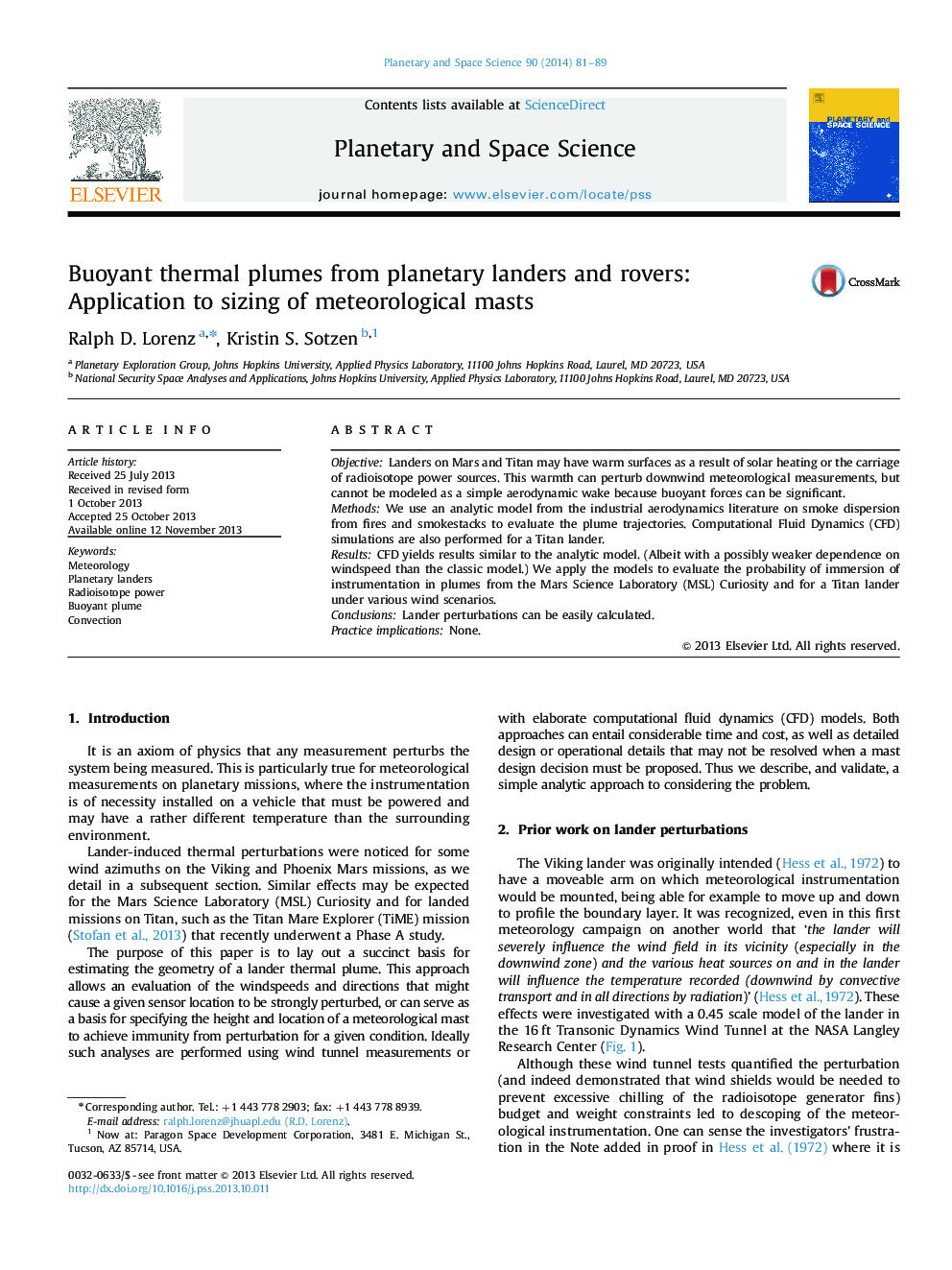| Article ID | Journal | Published Year | Pages | File Type |
|---|---|---|---|---|
| 1781182 | Planetary and Space Science | 2014 | 9 Pages |
•Considers the diagonal rise of air from a warm lander in crosswind.•Applies buoyant plume equations from industrial/forest fire literature.•Provides a rational basis for sizing the height of meteorological masts.•Applied to Titan lander (TiME) and to MSL/Curiosity.
ObjectiveLanders on Mars and Titan may have warm surfaces as a result of solar heating or the carriage of radioisotope power sources. This warmth can perturb downwind meteorological measurements, but cannot be modeled as a simple aerodynamic wake because buoyant forces can be significant.MethodsWe use an analytic model from the industrial aerodynamics literature on smoke dispersion from fires and smokestacks to evaluate the plume trajectories. Computational Fluid Dynamics (CFD) simulations are also performed for a Titan lander.ResultsCFD yields results similar to the analytic model. (Albeit with a possibly weaker dependence on windspeed than the classic model.) We apply the models to evaluate the probability of immersion of instrumentation in plumes from the Mars Science Laboratory (MSL) Curiosity and for a Titan lander under various wind scenarios.ConclusionsLander perturbations can be easily calculated.Practice implicationsNone.
